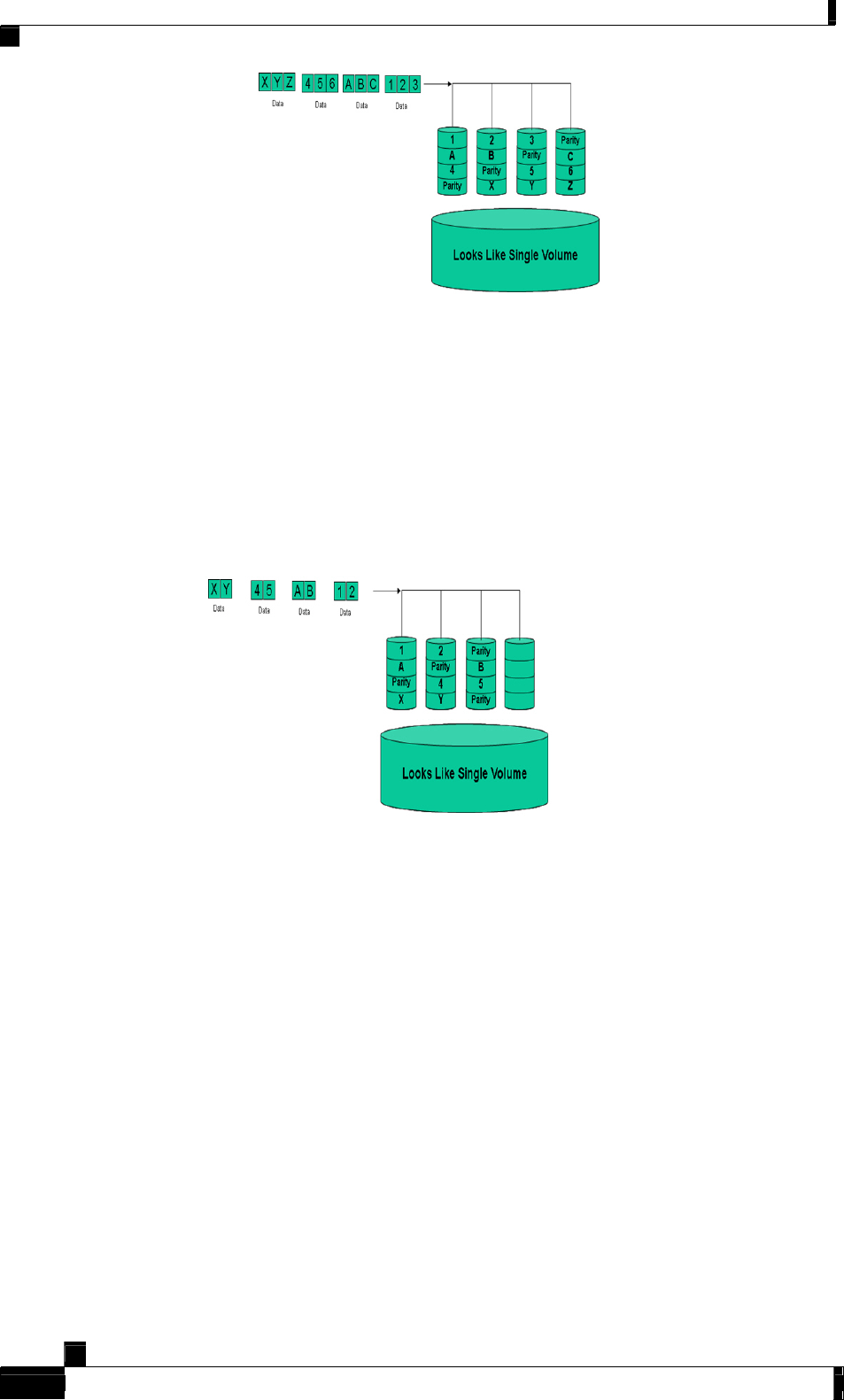Product data
Table Of Contents
- Contents
- Introduction
- Networked Storage Overview
- Storage Concepts and Technologies
- Conclusion
- Obtaining Technical Assistance
- Appendix A

Storage Concepts and Technologies
Figure 11: RAID 5
RAID 5+Spare (Parity + Spare)
The RAID 5 + Spare configuration adds a "hot spare" to RAID 5 (Figure 12). The following
design considerations apply:
• Minimum Number of Disks: 4
• Advantages: This option increases the overall system reliability so that when a disk
fai
ls within the array, the spare can be used to rebuild the data existing on the failed
disk. Sparing helps to minimize the time before a disk rebuild begins, so it minimizes
the time that the system is vulnerable to additional drive failure.
Figure 12: RAID 5+Spare
RAID 10 (Mirror Then Stripe)
This RAID level has multiple variations but can be thought of as a two-layer hierarchy of
RAID levels. Two or more RAID1 arrays form the lowest level and are then striped to form a
RAID0 array. The following design considerations apply:
• Minimum Number of Disks: 4
• Advantages: This level provides a high degree of redundancy and can be used for
databases with high loads due to its faster write speeds than those levels that use
parity for calculations. It also increases the overall system reliability so that when a
drive within the array fails, the spare can be used to rebuild the data existing on the
failed drive.
• Disadvantages: Expensive. All disks must move in parallel with proper track lowering
sustained performance. Limited scalability given high cost.
White Paper: Network Storage LINKSYS © 2007
13 EDCS-593805 v1.0
A printed copy of this document is considered uncontrolled










